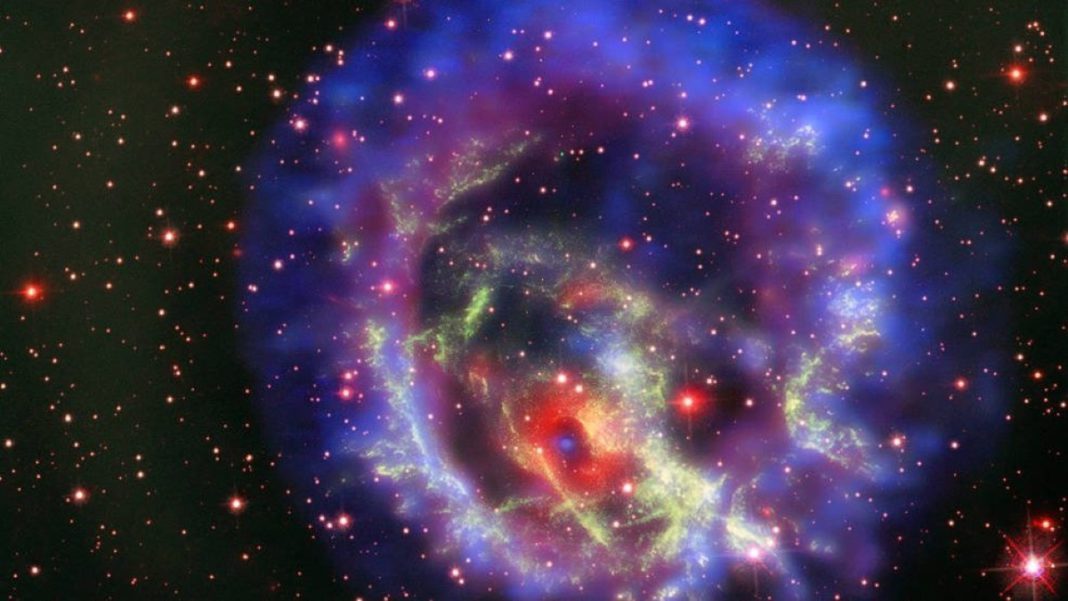UNITED STATES: A remarkable discovery sheds light on the enigmatic phenomena of magnetars and fast radio bursts (FRBs) as astronomers uncover the extraordinary connection between these extreme stellar corpses and their devastating impact on space rocks.
A recent study reveals how the neutron star SGR 1935+2154, located nearly 30,000 light-years away at the heart of the Milky Way, experienced a momentous “glitch” when it obliterated an asteroid that crossed its path.
Neutron stars, formed from the remnants of massive stars after a powerful supernova explosion, possess mind-boggling properties. Despite their tiny size, comparable to the average city on Earth, their mass equals that of our sun.
With one teaspoon of neutron star matter weighing as much as 1 billion tons on Earth, this incredible density is complemented by the most powerful magnetic fields in the universe, giving rise to the term “magnetar.”
The study’s groundbreaking revelation stems from the correlation between magnetars and FRBs, which have puzzled scientists since the first sighting of the Lorimer Burst in 2007.
Astronomers connected these elusive radio bursts to magnetars in 2020 when they detected two rapid-fire FRBs within the Milky Way. However, the exact mechanism behind this relationship has remained elusive until now.
According to the study, magnetars unleash FRBs when their immense gravitational force exerts overwhelming tidal forces on nearby asteroids, tearing them apart.
This process, known as tidal disruption, is also observed near black holes. When a star ventures too close to a black hole, its gravitational pull shreds the star, leading to similar tidal disruption events.
As neutron stars likely retain the remnants of their planetary systems, it is plausible that asteroids surround them. When a magnetar’s gravity pulls an asteroid in and disintegrates it, the momentum carried by the space rock cannot be annihilated due to the laws of physics.
Consequently, the “glitch” observed in the magnetar’s rotational speed results from this transferred angular momentum. Depending on the direction of the asteroid’s travel in relation to the spin of the magnetar, the glitch can either accelerate or decelerate the dense stellar remnant.
If the asteroid races in the same direction as the neutron star’s spin, it speeds up its rotation, resulting in a “glitch.” Conversely, if the asteroid travels in the opposite direction, it slows down the magnetar’s rotation, leading to an “anti-glitch.”
Intriguingly, the remains of the asteroid entangle within the magnetar’s intense magnetic field, causing the field lines to snap and reconnect in a process called magnetic reconnection. This phenomenon unleashes a powerful blast of radio waves known as the fast radio burst (FRB).
Furthermore, the study suggests that when the debris of the destroyed asteroid impacts the neutron star’s surface, it releases an astonishing amount of energy at various frequencies of light.
Such powerful flares of energy, if detected by astronomers, could aid in identifying more asteroids being devoured by magnetars, further solidifying the link between these enigmatic neutron stars and the destructive events that trigger FRBs.
As scientists continue to explore the universe’s most intriguing mysteries, this newfound understanding of magnetars and their association with fast radio bursts opens up new avenues for unravelling the secrets of these cosmic wonders.
The mesmerizing dance between these rapidly spinning neutron stars and the space debris they consume promises to captivate astronomers for years, providing unprecedented insights into the cosmos’ most powerful and enigmatic phenomena.
Also Read: NASA Perseverance Rover Uncovers Potential Building Blocks of Life on Mars



